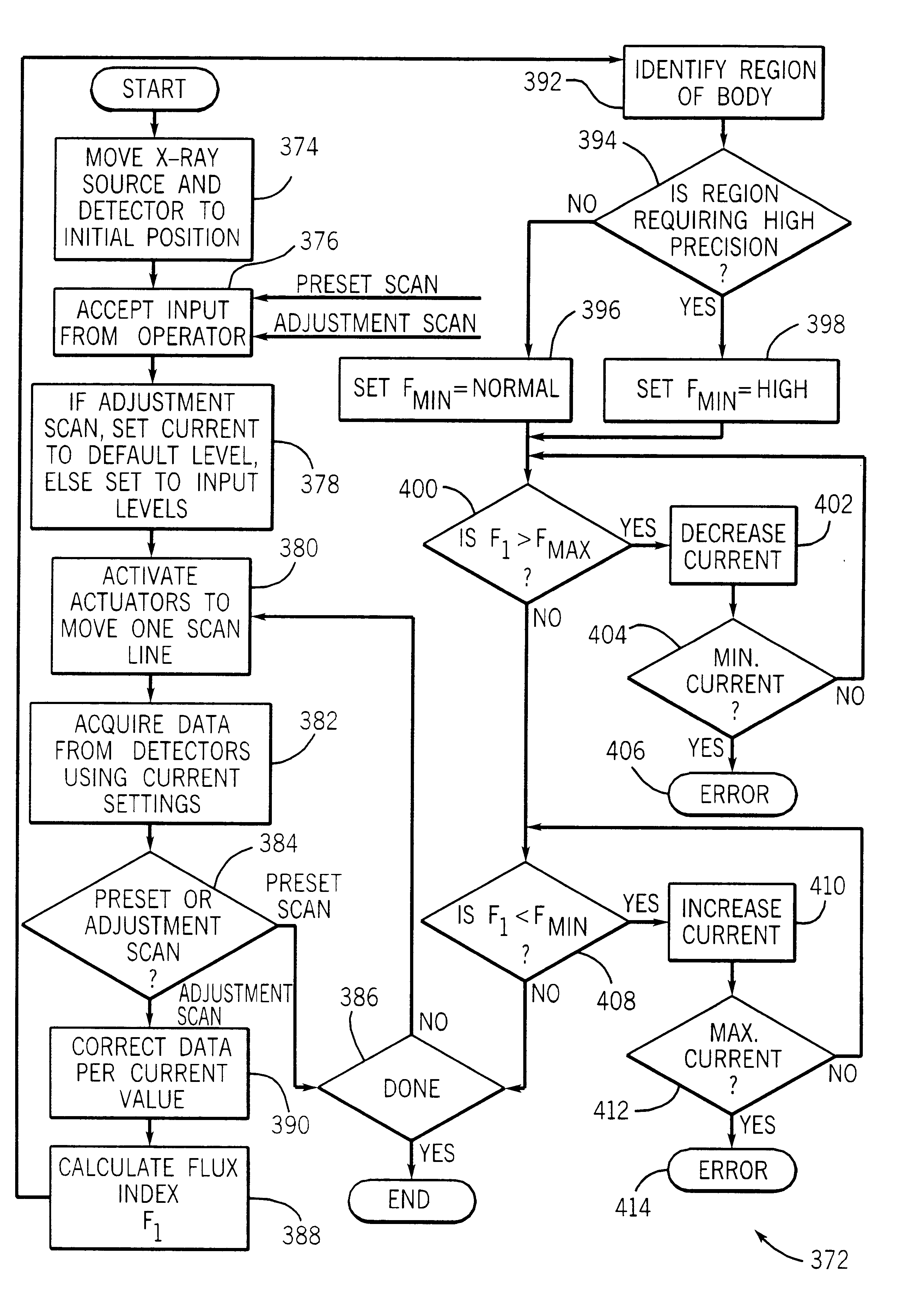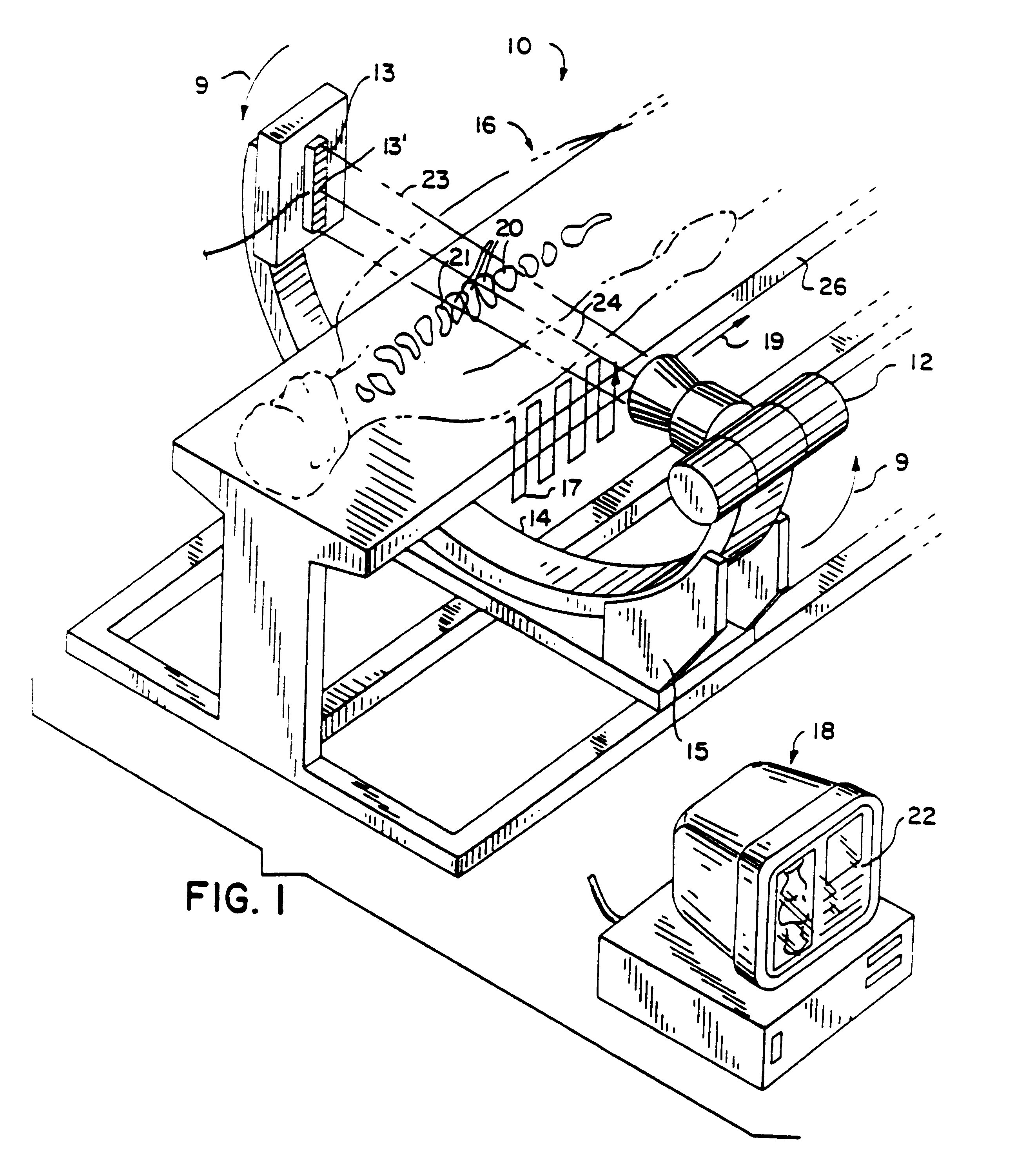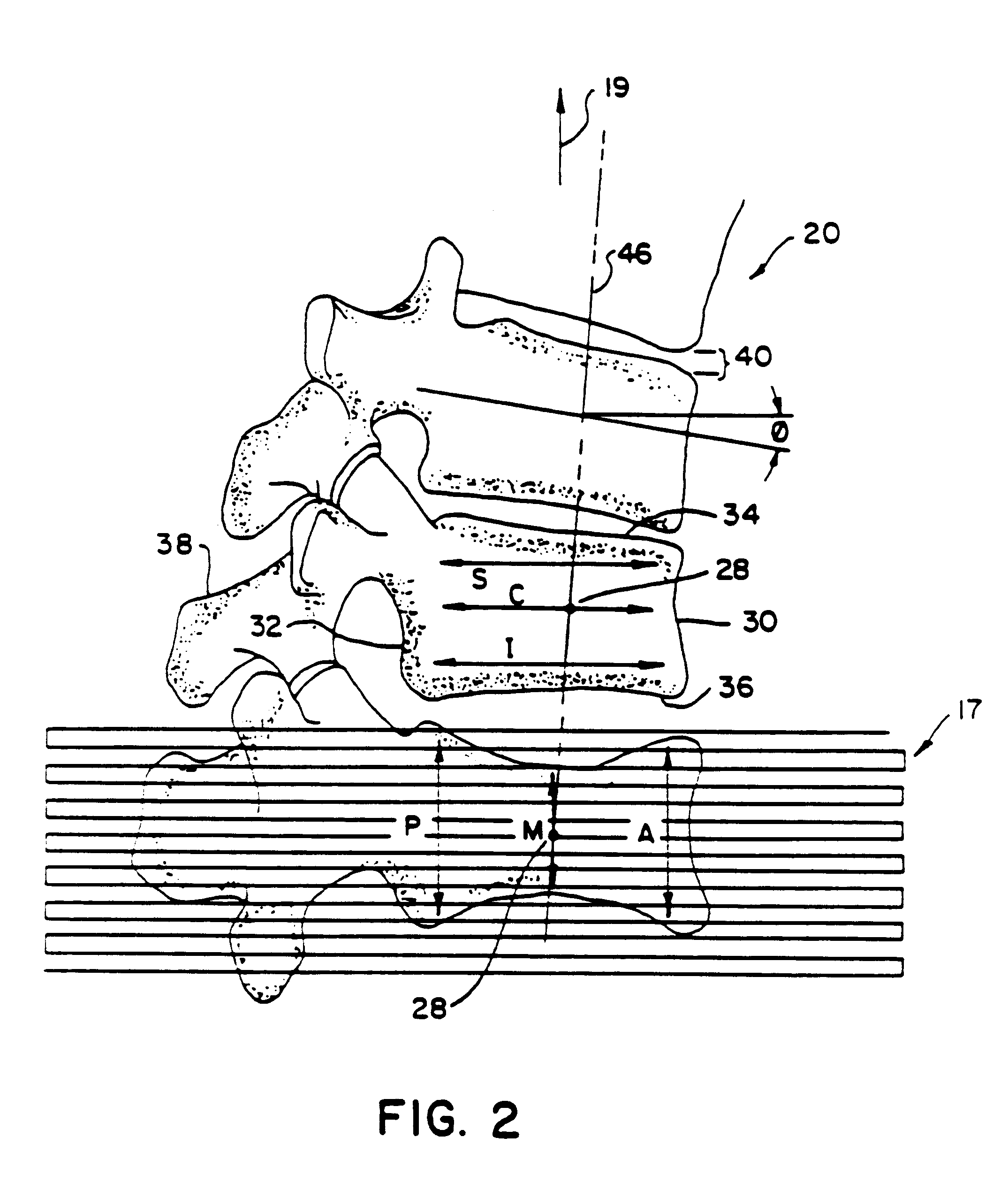Scanning densitometry system with adjustable X-ray tube current
a densitometry and x-ray tube technology, applied in the field of dual energy xray imaging and measuring equipment, can solve the problems of needlessly slow scan, complex multi-speed scanning mechanism and actuation device, and scan speed, and achieve the effect of effective continuous adjustmen
- Summary
- Abstract
- Description
- Claims
- Application Information
AI Technical Summary
Benefits of technology
Problems solved by technology
Method used
Image
Examples
example 2
Posterior Height
Another indicia of interest is the measurement of posterior height P of the vertebra. Like anterior height, posterior height measurements made in the prior art are taken at a single location within 5 to 10 mm of the posterior border of the vertebra. The present invention provides an automatic measurement of the average height of the posterior region of the vertebra 20 lying within the posterior fiducial zone 112 which occupies the posterior 1 / 4 of the analysis rectangle 110. Like anterior height, posterior height may be displayed to an operator in absolute units of measurement, such as millimeters, or the computer can provide height relative to the average height either of normal values of vertebrae in the general population or the other vertebrae of that patient.
example 3
Anterior / Posterior Height Comparison
An important indicia which the computer can be programmed to automatically obtain is a comparison of anterior height A to posterior height P. Typically a 15% decrease in anterior vertebral height, either relative to a norm, relative to the same individual in previous measurements, or relative to the posterior height of the same vertebra, is taken as an index of anterior vertebral fracture, a clinically significant indication.
example 4
Another indicia of vertebral morphology which can be automatically obtained with the present invention is the wedge angle. The wedge angle of the vertebra is defined as the degree of departure from a parallel relationship that linear extensions of the planes of averages of the inferior and superior borders would create. In the prior art, this is calculated based on the overall anterior and posterior height of the vertebra. From these values of anterior and posterior height and from the distance between the locations at which the measurements were taken, it becomes possible to calculate the angle between hypothetical straight lines extending through the superior and inferior borders of the vertebra. In the present invention, the distance between A and P for purposes of plotting the wedge angle is C. Since A, P and C are average values, variability in the wedge angle due to variation in the selection of the location for height and width measurement is avoided. Typically a 1...
PUM
 Login to View More
Login to View More Abstract
Description
Claims
Application Information
 Login to View More
Login to View More - R&D
- Intellectual Property
- Life Sciences
- Materials
- Tech Scout
- Unparalleled Data Quality
- Higher Quality Content
- 60% Fewer Hallucinations
Browse by: Latest US Patents, China's latest patents, Technical Efficacy Thesaurus, Application Domain, Technology Topic, Popular Technical Reports.
© 2025 PatSnap. All rights reserved.Legal|Privacy policy|Modern Slavery Act Transparency Statement|Sitemap|About US| Contact US: help@patsnap.com



